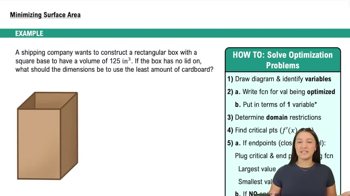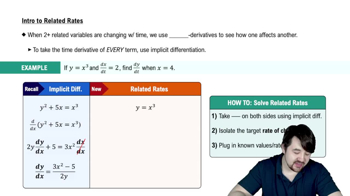Moving searchlight beam The figure shows a boat 1 km offshore, sweeping the shore with a searchlight. The light turns at a constant rate, dθ/dt = -0.6 rad/sec.
b. How many revolutions per minute is 0.6 rad/sec?
<IMAGE>
 Verified step by step guidance
Verified step by step guidance Verified video answer for a similar problem:
Verified video answer for a similar problem:



 4:16m
4:16mMaster Intro To Related Rates with a bite sized video explanation from Patrick
Start learning